
~This post contains affiliate links.
I remember reading the Kindergarten Writing Standards seeing report writing as a requirement. I’ll admit it – I thought this was an unrealistic and absurd expectation for five and six year-olds. Yet in teaching, we’ve got to do what we’ve got to do. So I started thinking about how I could make it work for my kids (and my sanity). I created this Penguins Research Report Writing Unit to simplify the process. It includes all the facts you’ll need along with a report format. In this post, I’ll share how I use this resource in my own kindergarten classroom.
Penguins Report Writing Unit
This Penguins Research Report Unit is differentiated for report writing in Kindergarten, first grade, or even second grade. Here is what is included:

- Graphic organizers
- Research fast facts
- KWL Chart
- 2 report cover choices
- Table of Contents
- Your choice of 3 differentiated four page reports with Primary Lined Paper. Select the paper that best meets the needs of your writers. The blue area shown prints as a light gray
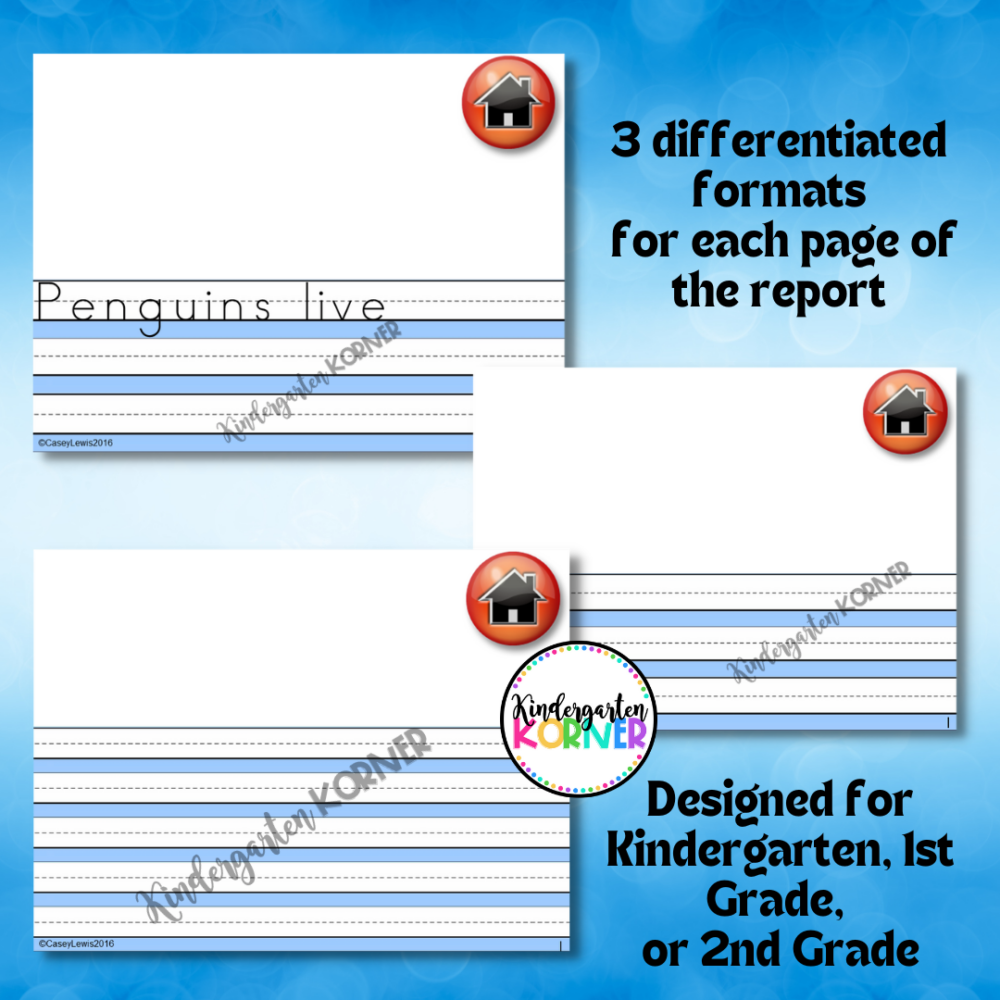
How to Teach Report Writing
We typically begin this unit towards the end of January or early February. First, I begin by discussing the term “research” and what that means.
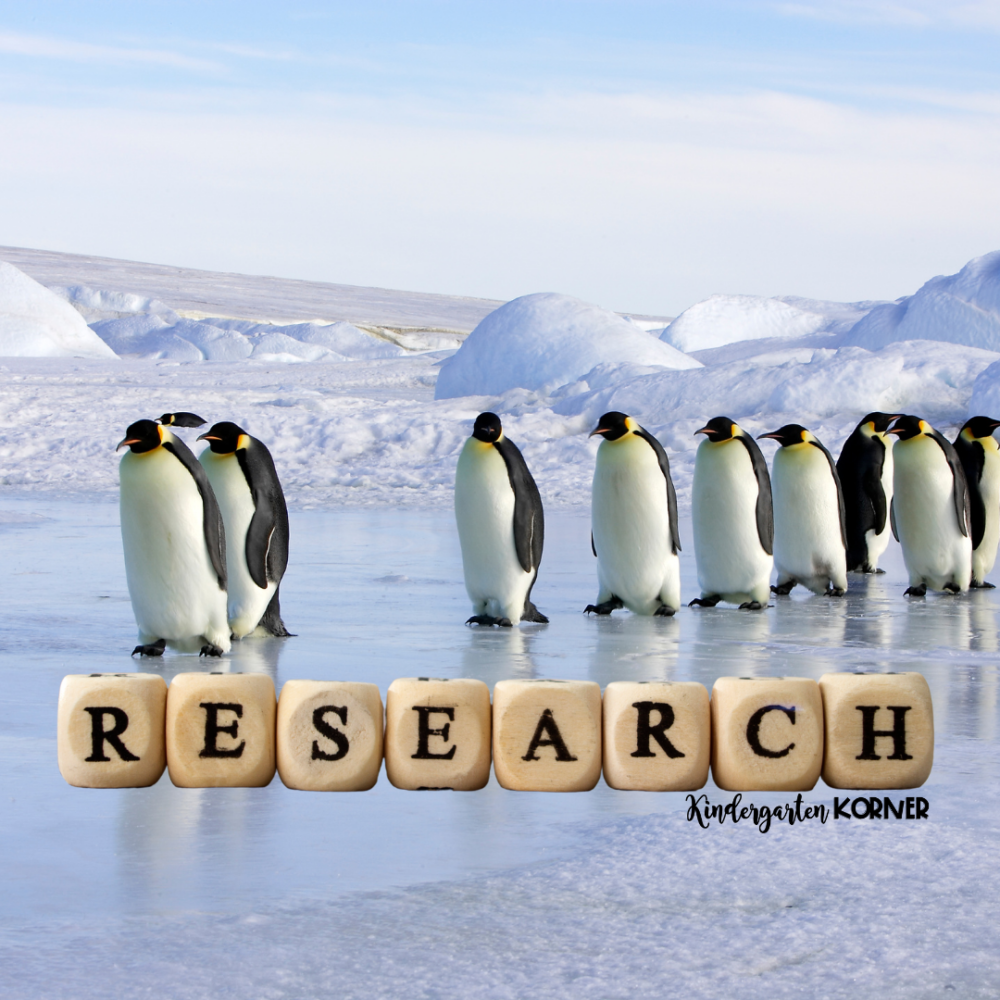
Then, I ask the kids to name some ways or sources we can use to obtain information. As the kids give ideas, I list them on chart paper.
Next, we use the included KWL (What I Know, What I Want to Know, and What I’ve Learned) chart and complete the first two columns together. I tell the kids we will come back to the KWL chart later. After we complete our research, we will fill out the L part of the chart for what we have learned in our research process.
Penguins Research Report Writing Sources
Using the list of research sources, we spend one week researching our topic, which in this case is penguins. My read-alouds for the week include all non-fiction books about penguins. Some of my favorite penguins books for kids are linked HERE.
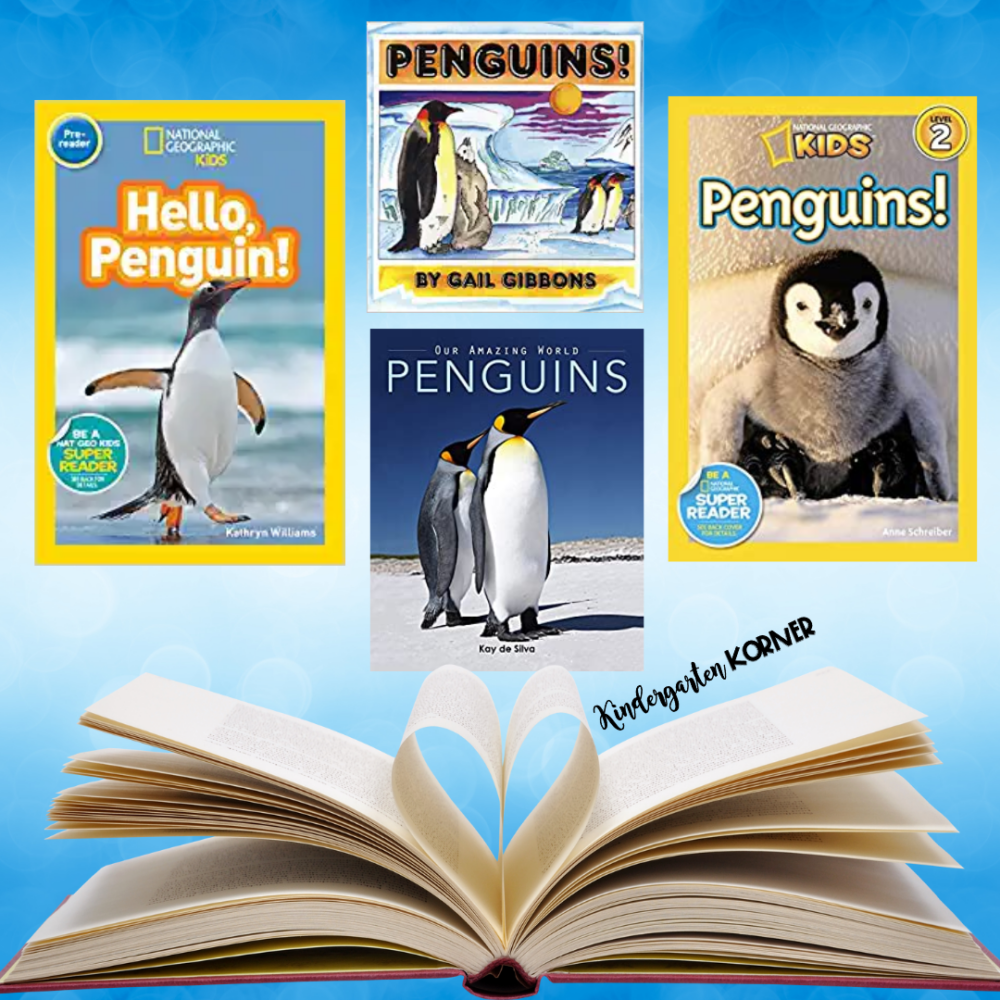
If your school subscribes to Scholastic News, there is almost always one about penguins in the winter. My kids love our Let’s Find Out magazines!
I also teach how to search for information online, but I tell my students this is something they should only do with an adult! We do a Google search together on “penguin facts for kids.” My students also enjoy watching short educational films on YouTube.
Using Graphic Organizers for Pre-Writing
Once we have completed the research, I teach the kids about the importance of organizing our information. I show them the graphic organizer, and we complete this page together. A blank version for the students is included along with a completed teacher version with all the research done for you!
Time for Report Writing
Finally, it’s time to write our reports. We do one page per day, and the reports are finished by the end of the week. By January, most of my kids are able to write at least one sentence on their own. I offer additional support to those students who are not quite there yet. Higher level students may be able to write two to three sentences.
I use this as a report card grade, and then send them home.
Take a look at this example below…
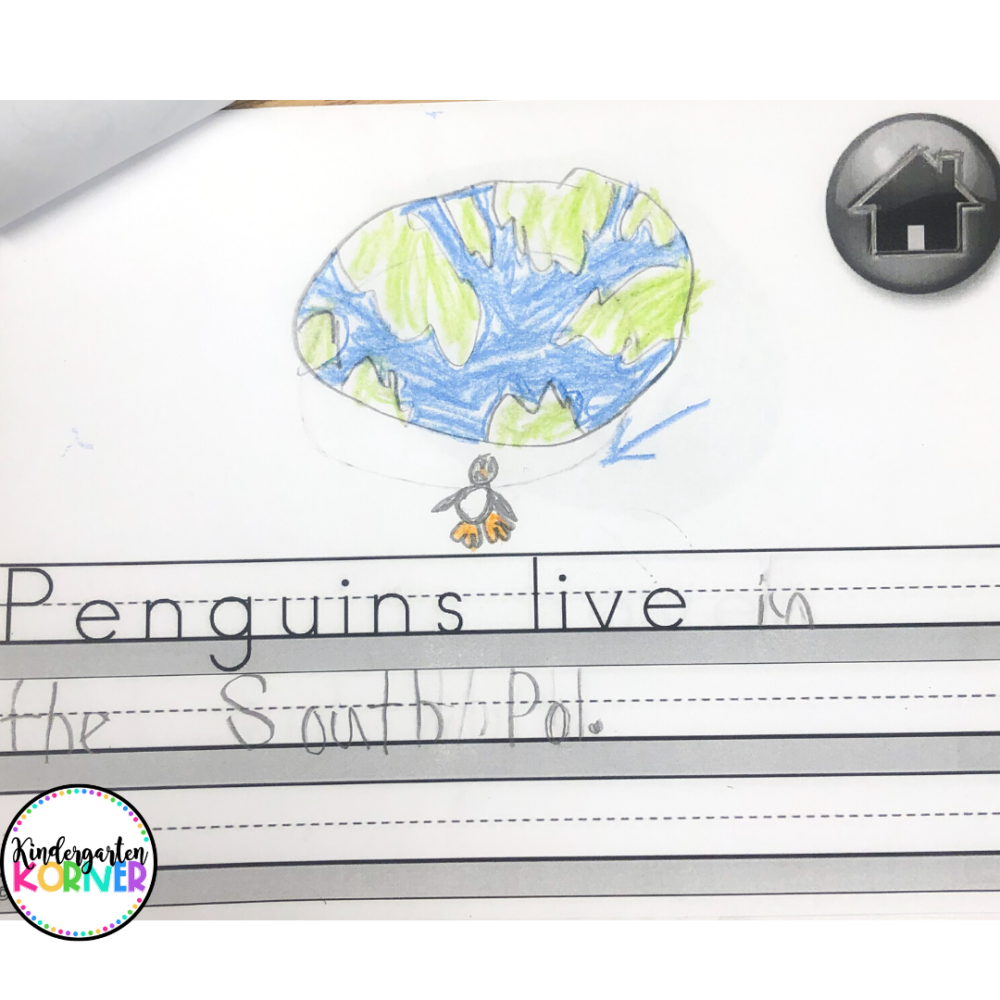
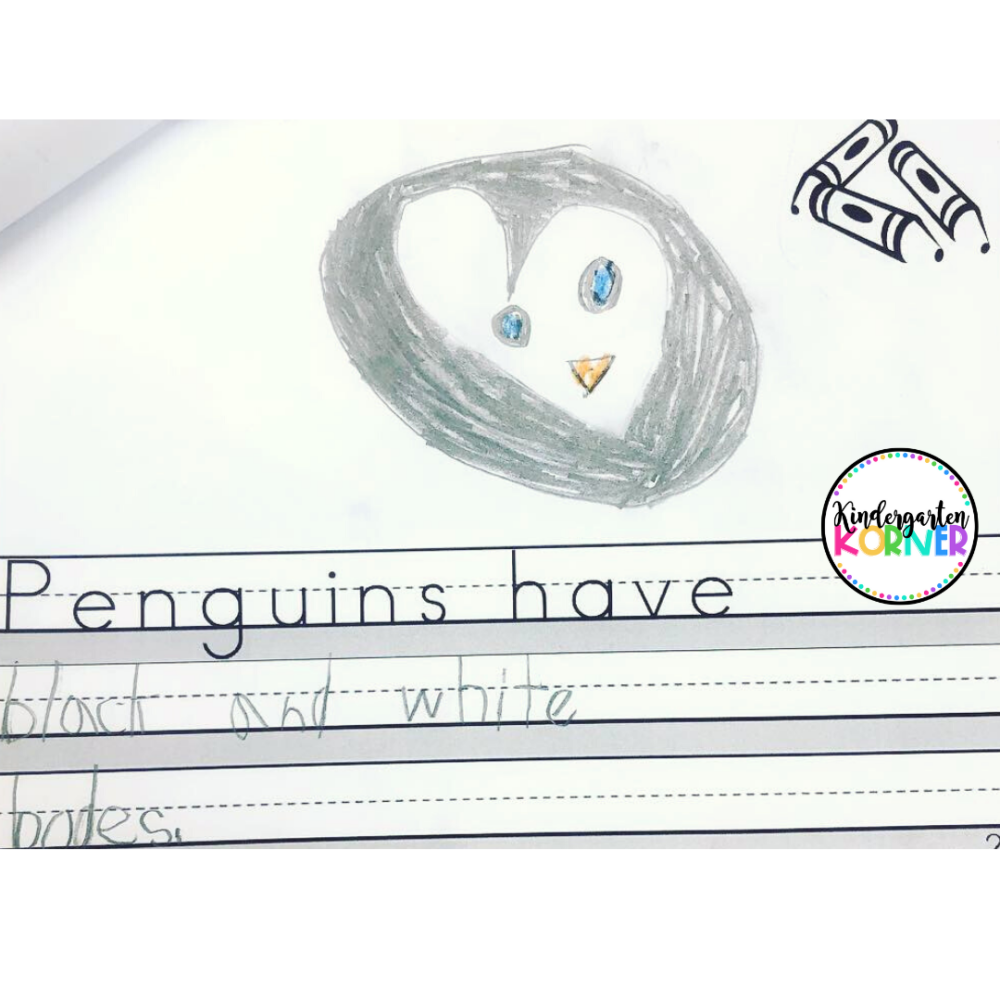
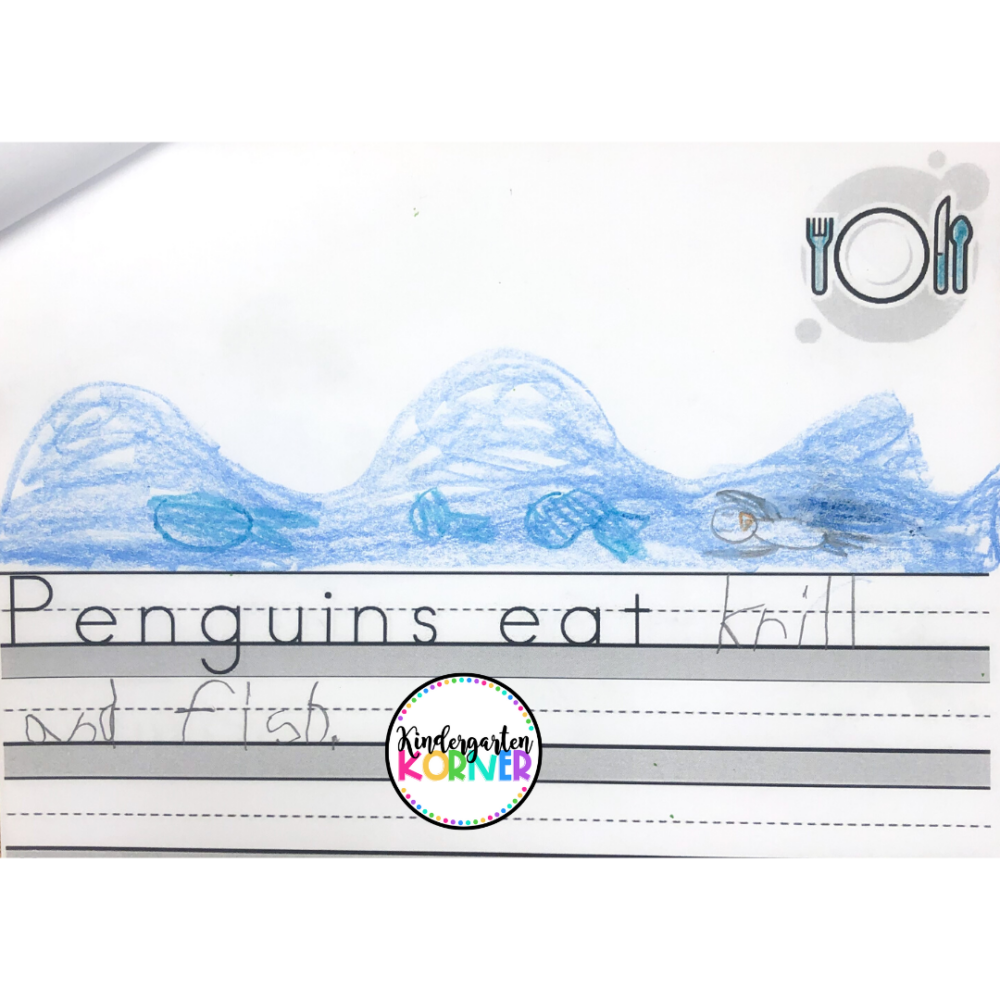
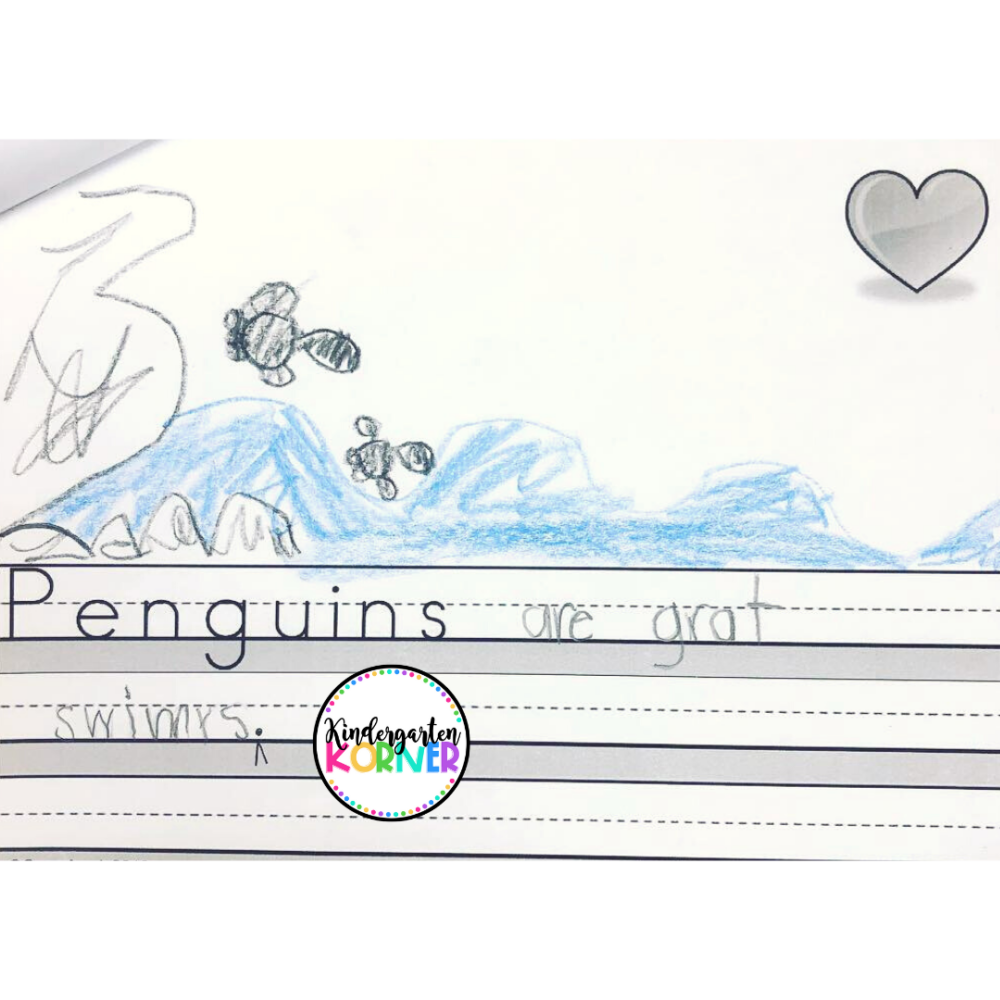
I hope that this post inspires you to give report writing a try with your kindergarten, first, or second grade students. The kids will love it, and you’ll be amazed at the finished products!
You can find my Penguins Report Writing Unit in my TPT Store. I also have a similar unit on Polar Bear Research Report Writing.
For more kindergarten inspiration, visit THE BLOG! Also, be sure to join the Kindergarten Korner Free Resources Library!
Casey Stewart is a kindergarten teacher and founder of Kindergarten Korner. She has 17 years of experience teaching in kindergarten, first, and second grade. She created http://www.kindergartenkorner.com to inspire fellow educators and help guide parents and homeschooling families on their journey throughout the magical kindergarten experience. Casey also has three kids of her own at home. Learn more about her HERE.

